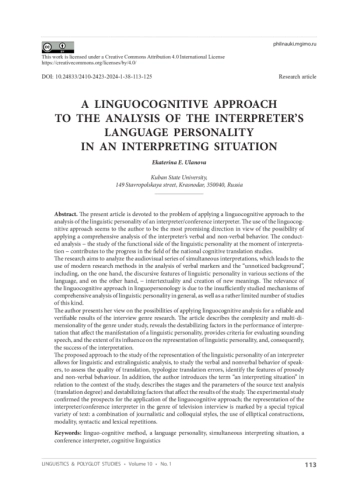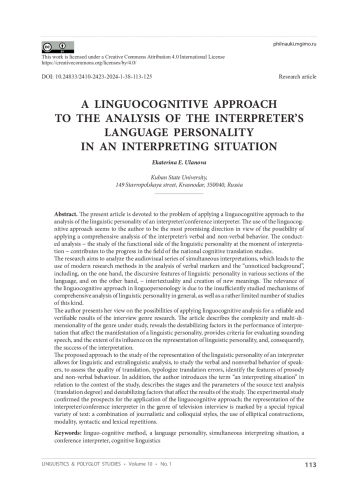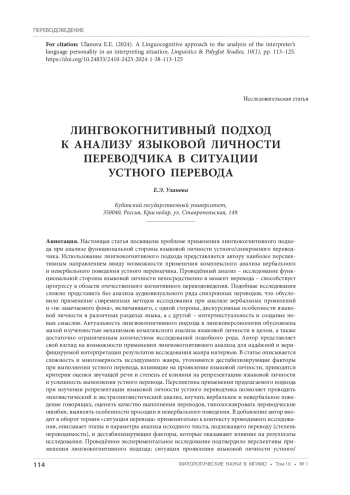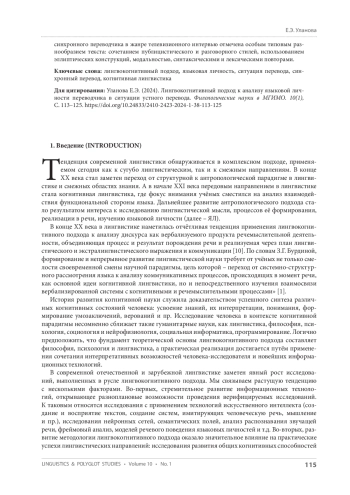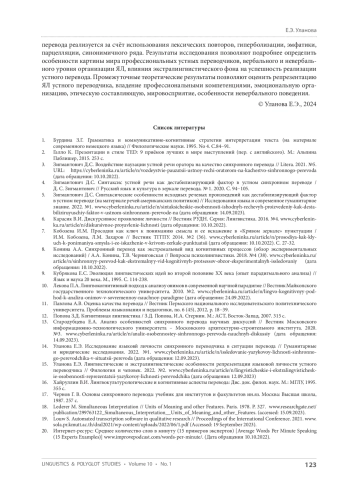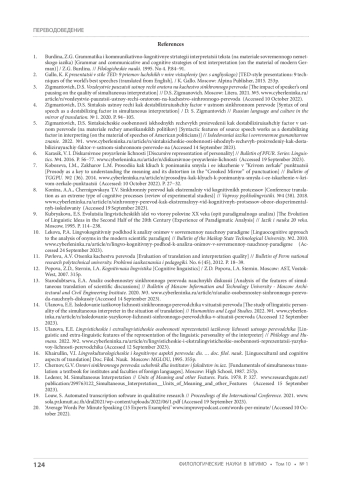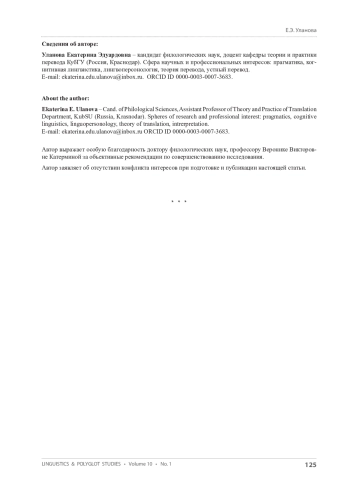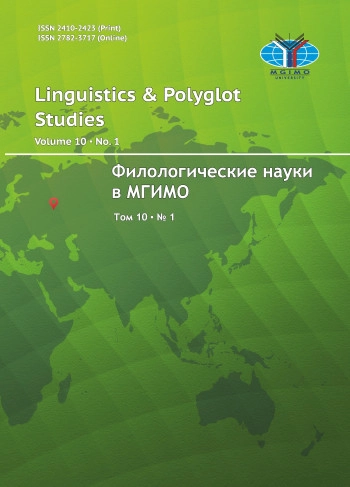Настоящая статья посвящена проблеме применения лингвокогнитивного подхода при анализе функциональной стороны языковой личности устного/синхронного переводчика. Использование лингвокогнитивного подхода представляется автору наиболее перспективным направлением ввиду возможности применения комплексного анализа вербального и невербального поведения устного переводчика. Проведённый анализ - исследование функциональной стороны языковой личности непосредственно в момент перевода - способствует прогрессу в области отечественного когнитивного переводоведения. Подобные исследования сложно представить без анализа аудиовизуального ряда синхронных переводов, что обусловило применение современных методов исследования при анализе вербальных проявлений и «не замечаемого фона», включающего, с одной стороны, дискурсивные особенности языковой личности в различных разделах языка, а с другой - интертекстуальность и создание новых смыслов. Актуальность лингвокогнитивного подхода в лингвоперсонологии обусловлена малой изученностью механизмов комплексного анализа языковой личности в целом, а также достаточно ограниченным количеством исследований подобного рода. Автор представляет свой взгляд на возможности применения лингвокогнитивного анализа для надёжной и верифицируемой интерпретации результатов исследования жанра интервью. В статье описывается сложность и многомерность исследуемого жанра, уточняются дестабилизирующие факторы при выполнении устного перевода, влияющие на проявление языковой личности, приводятся критерии оценки звучащей речи и степень её влияния на репрезентацию языковой личности и успешность выполнения устного перевода. Перспектива применения предлагаемого подхода при изучении репрезентации языковой личности устного переводчика позволяет проводить лингвистический и экстралингвистический анализ, изучать вербальное и невербальное поведение говорящих, оценить качество выполнения переводов, типологизировать переводческие ошибки, выявлять особенности просодии и невербального поведения. В добавление автор вводит в оборот термин «ситуация перевода» применительно к контексту проводимого исследования, описывает этапы и параметры анализа исходного текста, подлежащего переводу (степень переводимости), и дестабилизирующие факторы, которые оказывают влияние на результаты исследования. Проведённое экспериментальное исследование подтвердило перспективы применения лингвокогнитивного подхода; ситуация проявления языковой личности устного/ синхронного переводчика в жанре телевизионного интервью отмечена особым типовым разнообразием текста: сочетанием публицистического и разговорного стилей, использованием эллиптических конструкций, модальностью, синтаксическими и лексическими повторами.
The present article is devoted to the problem of applying a linguocognitive approach to the analysis of the linguistic personality of an interpreter/conference interpreter. The use of the linguocognitive approach seems to the author to be the most promising direction in view of the possibility of applying a comprehensive analysis of the interpreter’s verbal and non-verbal behavior. The conducted analysis - the study of the functional side of the linguistic personality at the moment of interpretation - contributes to the progress in the field of the national cognitive translation studies. The research aims to analyze the audiovisual series of simultaneous interpretations, which leads to the use of modern research methods in the analysis of verbal markers and the “unnoticed background”, including, on the one hand, the discursive features of linguistic personality in various sections of the language, and on the other hand, - intertextuality and creation of new meanings. The relevance of the linguocognitive approach in linguopersonology is due to the insufficiently studied mechanisms of comprehensive analysis of linguistic personality in general, as well as a rather limited number of studies of this kind. The author presents her view on the possibilities of applying linguocognitive analysis for a reliable and verifiable results of the interview genre research. The article describes the complexity and multi-dimensionality of the genre under study, reveals the destabilizing factors in the performance of interpretation that affect the manifestation of a linguistic personality, provides criteria for evaluating sounding speech, and the extent of its influence on the representation of linguistic personality, and, consequently, the success of the interpretation. The proposed approach to the study of the representation of the linguistic personality of an interpreter allows for linguistic and extralinguistic analysis, to study the verbal and nonverbal behavior of speakers, to assess the quality of translation, typologize translation errors, identify the features of prosody and non-verbal behaviour. In addition, the author introduces the term “an interpreting situation” in relation to the context of the study, describes the stages and the parameters of the source text analysis (translation degree) and destabilizing factors that affect the results of the study. The experimental study confirmed the prospects for the application of the linguocognitive approach; the representation of the interpreter/conference interpreter in the genre of television interview is marked by a special typical variety of text: a combination of journalistic and colloquial styles, the use of elliptical constructions, modality, syntactic and lexical repetitions.
